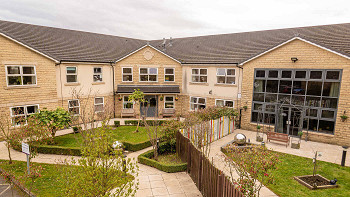Building Compassion: How Expert Teams are Shaping the Future of Care with Quality Care Home Construction
As the global population continues to age, the demand for well-designed, functional, and compassionate residential care environments is growing at an unprecedented pace. Whether it’s for assisted living, dementia care, or nursing services, high-quality care home construction is a fundamental aspect of meeting the physical and emotional needs of residents. But crafting these specialized living spaces is no ordinary task—it requires skill, sensitivity, and a deep understanding of the sector’s unique challenges.
This is where industry leaders like Care Home Builders make a significant impact. With their focused expertise in constructing care facilities that are both practical and nurturing, they help lay the groundwork for the future of elderly and specialist care.
Understanding the Core of Care Home Construction
The essence of care home construction lies not just in laying bricks and beams, but in shaping environments where elderly or vulnerable individuals can thrive. It’s a specialized branch of construction that must consider:
- Regulatory compliance: From fire safety standards to accessibility regulations, building a care home involves adhering to strict legal frameworks that ensure resident safety and comfort.
- Accessibility: Every space must be designed to accommodate wheelchairs, walkers, and other mobility aids.
- Functionality and flow: The internal layout needs to support both privacy and easy navigation for residents while allowing staff to efficiently carry out care duties.
- Home-like aesthetics: Residents should feel at home, not institutionalized. Creating a warm, welcoming atmosphere is key to promoting mental well-being.
A well-constructed care home goes beyond functionality—it serves as a sanctuary where individuals can feel secure, respected, and valued.
The Shift Toward Person-Centered Design
In recent years, care home construction has evolved dramatically, moving away from generic facilities to more tailored, resident-focused design. Developers and builders now collaborate with healthcare providers, architects, and even residents and their families to understand exactly what the end-users need.
Open-plan social areas, sensory gardens, private en-suite rooms, and therapy zones are just some of the features now seen in modern care homes. This approach promotes autonomy, reduces anxiety, and encourages social interaction.
By integrating technology such as telehealth systems, fall detection, and even smart lighting, builders ensure that care homes are future-proofed and adaptable to a changing healthcare landscape.
Sustainability in Care Home Construction
Eco-consciousness is no longer an option—it’s a necessity. Sustainable care home construction involves:
- Utilizing renewable energy systems such as solar panels
- Incorporating passive design elements to reduce heating and cooling loads
- Using sustainable and non-toxic building materials
- Installing energy-efficient lighting and HVAC systems
These elements not only contribute to environmental conservation but also create healthier indoor environments and reduce operational costs—benefits that can ultimately be passed on to residents.
Challenges in the Industry
While the demand for quality care homes is rising, several challenges complicate the landscape:
- Budget constraints: Many care home projects are funded through public or non-profit channels, which can limit resources.
- Workforce shortages: The construction and care sectors alike face shortages in skilled labor, impacting project timelines.
- Evolving regulations: Builders must stay constantly updated on changes in building codes, accessibility laws, and healthcare guidelines.
- Community opposition: Occasionally, local resistance to care home developments can create delays or necessitate redesigns.
Overcoming these challenges requires not only technical know-how but also strategic planning and effective communication across all stakeholders.
Why Choose Experts Like Care Home Builders
Collaborating with specialists in care home construction is essential to ensure quality and compliance. Companies like Care Home Builders bring:
- Years of sector-specific experience
- An in-depth understanding of healthcare requirements
- Proven processes that optimize both time and budget
- Access to a network of trusted architects, designers, and engineers
Their work doesn’t end when the last nail is hammered in—they also provide ongoing support to ensure facilities function as intended and adapt to evolving care needs.
Final Thoughts
As society continues to place a stronger emphasis on dignity and quality of life for aging populations, the importance of thoughtful, expert-driven care home construction becomes even more apparent. The facilities we build today will become the safe havens of tomorrow for those who once cared for us.
Investing in the right team and design from the outset ensures these spaces will not only meet regulatory standards but will also resonate with warmth, security, and compassion. Whether you’re a developer, investor, or healthcare provider, aligning your project with experts in the field is the smartest step toward shaping a better future in care.




Leave a Reply
Want to join the discussion?Feel free to contribute!